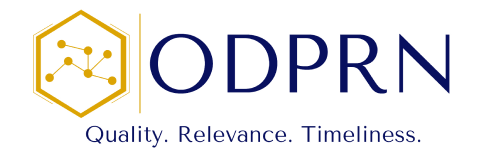The ODPRN has completed a drug class review on cognitive enhancers for treatment of Alzheimer’s disease. The final reports and a summary of the research findings and reimbursement options are available below.
Final Reports and Reimbursement Options
- Consolidated Final Report and Reimbursement Option Recommendations
- Cognitive Enhancer Qualitative Report
- Cognitive Enhancer Environmental Scan Report
- Cognitive Enhancer Pharmacoepidemiology Report
- Cognitive Enhancer Systematic Review Report
- Cognitive Enhancer Pharmacoeconomics Report
- Cognitive Enhancer Citizen’s Panel Report
Click to view the complete infographic for clinicians
Summary of Drug Class Review Findings: Cognitive Enhancers for the Treatment of Alzheimer’s Disease
Download a PDF of this Research Summary
The Ontario Drug Policy Research Network (ODPRN) conducted a drug class review on the effectiveness, safety, and accessibility of cognitive enhancers for the treatment of Alzheimer’s disease (AD) using multiple research methods. In Canada, there are two types of cognitive enhancers available: cholinesterase inhibitors (i.e., donepezil, rivastigmine, galantamine) and N-methyl-D-aspartate (NMDA) receptor antagonist (i.e., memantine).
What did we find?
Efficacy and Safety
All cholinesterase inhibitors were effective in improving cognition for patients with mild to moderate AD, except for memantine. Donepezil was the only drug that helped improve cognition for severe patients. It should be noted that although the drugs were found to statistically significantly improve cognition, the improvement was minimal for most patients (i.e., may be difficult to perceive a difference clinically). All of the cognitive enhancers improved global status . None of the drugs were helpful in improving functionality or behaviour.
All of the drugs cause gastrointestinal side effects that include nausea, vomiting and diarrhea. However, rivastigmine patch decreased the risk of gastrointestinal side effects compared to oral formulations of cholinesterase inhibitors.
Accessibility and Use
No accessibility issues were found. In Ontario, oral cholinesterase inhibitors (donepezil, rivastigmine, galantamine) are available as Limited Use for patients with mild or moderate Alzheimer’s disease with the exception of Exelon Oral Solution, which is available through the Exceptional Access Program. However memantine and the rivastigmine patch are only accessible to individuals willing to pay cash, or who have private drug coverage.
Ontario has the highest rate of publicly funded cognitive enhancer use in the country. In 2013, there were 146,593 cognitive enhancer users aged 65 and older in Ontario. Between 2000 (first quarter) and 2013 (fourth quarter), the number of users in the elderly population increased almost 7-fold, from 5 users per 1000 elderly to 2000 to 33 users per 1000 elderly in 2013.
Cost
Donepezil was the most cost-effective therapy across all severities of Alzheimer’s disease. Memantine and the rivastigmine patch were not found to be cost-effective.
However, rivastigmine patch would be cost effective with a price reduction of approximately 55%. Additionally, if donepezil was listed as general benefit (with a price that is 18% of the innovator’s price, instead of the current 25%) this option would result in a reduced cost to the system ($5.4 million or 12% decrease). However, if listings changed to include patients with severe Alzheimer’s disease, or to include the rivastigmine patch at current price, costs would increase ranging from $804,000 to $10.7 million (2-24% increase).
What do we recommend?
Limited Use
For oral cholinesterase inhibitors for initiation of patients with mild to moderate Alzheimer’s disease (with updated clinical criteria). Also, listing the rivastigmine patch on the Exceptional Access Program should be explored, provided a price reduction of approximately 55% can be negotiated.
How did we conduct our studies?
The ODPRN conducted a drug class review consisting of multiple studies: a qualitative study to determine the experiences of use and prescribing; a systematic review to determine efficacy and safety; a pharmacoepidemiological analysis to determine patterns of use in Ontario and across Canada; an environmental scan to determine national and international guidelines and public drug coverage models; and pharmacoeconomic analyses to determine the cost of public drug funding under different coverage policies. Detailed descriptions of each of these studies are available at the ODPRN website.
Final Comprehensive Research Plans
- Comprehensive Research Plan Overview
- Cognitive Enhancer Qualitative CRP
- Cognitive Enhancer Environmental Scan CRP
- Cognitive Enhancer Pharmacoepidemiology CRP
- Cognitive Enhancer Systematic Review CRP
- Cognitive Enhancer Pharmacoeconomics CRP
Any questions? Contact us at info@odprn.ca.
